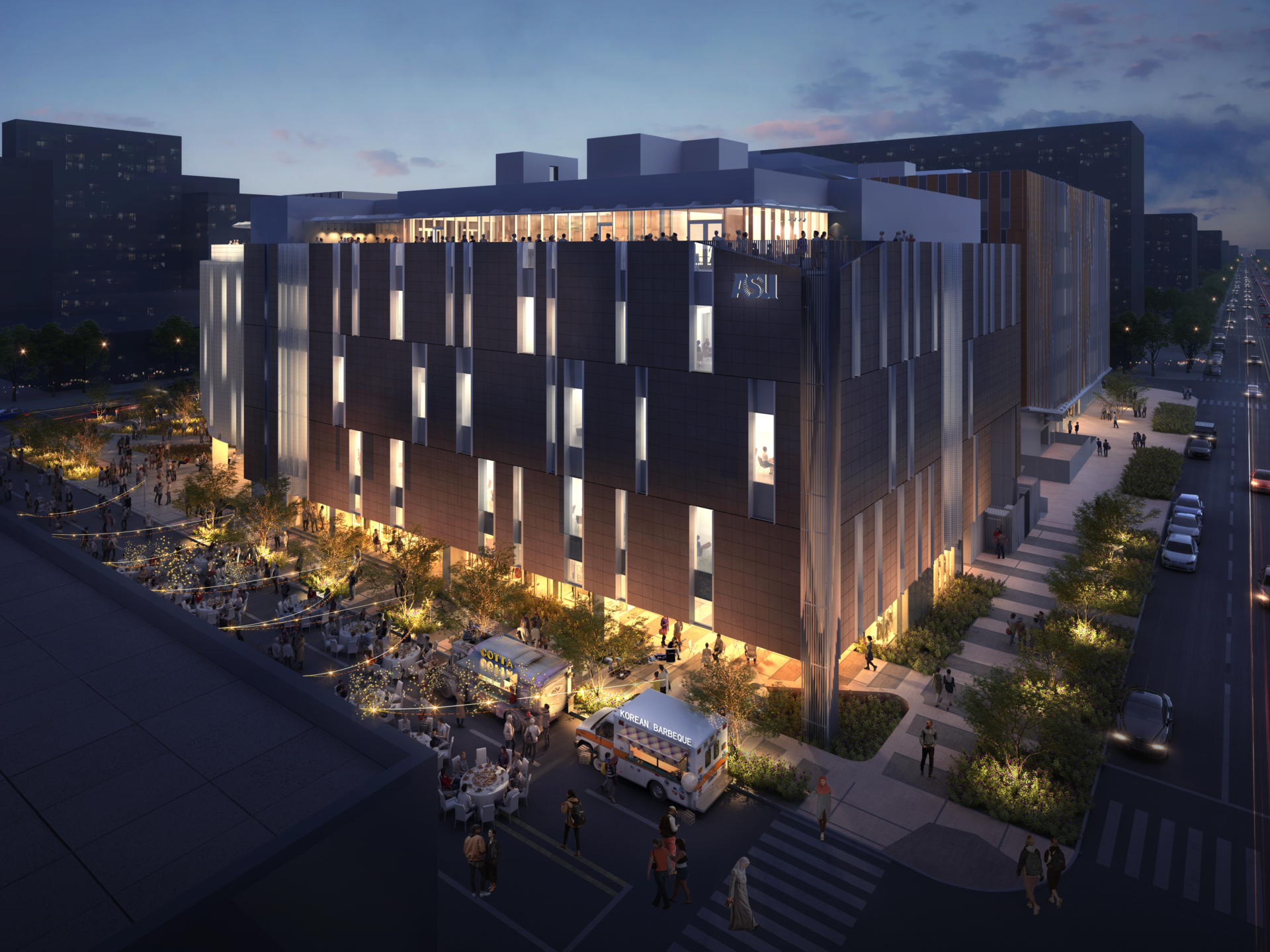Amazing things are happening in Downtown Phoenix. The city is experiencing tremendous growth. In addition to welcoming new residents from across the country, Phoenix also has been attracting businesses in the health care and bioscience sector.
It all started approximately 20 years ago with the purchase of 30 acres for possible expansion of the convention center and, later, consideration for a new stadium for the Arizona Cardinals. When both projects shifted course, Phoenix was left with a large plot of undeveloped land.
At the same time, Dr. Jeffrey Trent had just decoded the human genome. Inspired by the Phoenician’s work, the city decided to partner with educational, science and medical visionaries to make a substantial investment in the life sciences.
READ ALSO: A look inside the Central Phoenix boom in healthcare and bioscience
“City and state leadership, the governor and the Flinn Foundation wanted to bring a revolution in medicine to Phoenix,” recalls Christine Mackay, community and economic development director for the City of Phoenix. “They created this idea of a central area where education, health care and biosciences converged.”
In 2004, the Phoenix Biomedical Campus (PBC) was established on that vacant lot at the northwest corner of Seventh and Van Buren streets.
Life Sciences Hub
Anchoring the PBC is the $58 million headquarters of Translational Genomics Research Institute (TGen), which was founded by Trent. The organization’s presence served as a magnet for additional health and science businesses, attracting University of Arizona’s College of Medicine; Arizona State University’s College of Health Solutions, Edson College of Nursing and Health Innovation and Biodesign Institute; and Northern Arizona’s Health & Human Services department.
“Having all three state universities in one geographic area creates great momentum and synergies,” explains Thomas Maynard, vice president of business development for the Greater Phoenix Economic Council.
The latest addition to the campus is the state-of-the-art PBC Innovation Center, also known as 850 PBC, developed by Wexford Science & Technology, a Maryland-based company that collaborates with universities, research facilities and medical centers to create mixed-use communities that focus on health sciences. The 227,000-square-foot building, which celebrated its grand opening at the end of March, features research laboratories, clinical trial areas, a wet lab and shell space that can be customized for future tenants. It is home to a number of ASU innovation and research departments, as well as a selection of spin out companies, including OncoMyx Therapeutics, which develops immunotherapies; ElectraTect, which is focused on making tools to detect and measure marijuana consumption; and Calviri, which provides vaccines and diagnostics to prevent and treat cancer.
Surrounding the campus, within 2 miles in any direction are more than two dozen education, research and medical facilities, including Bioscience High School, Banner University Medical Center, Phoenix Children’s Hospital, Valleywise Medical Center and Banner MD Anderson Cancer Center. Farther north, at Central Avenue and Thomas Road, Nebraska-based Jesuit college Creighton University is putting the finishing touches on its Health Sciences Campus at Park Central.
“For the last eight or nine years, our third- and fourth-year medical students have been doing rotations in Phoenix. When you look the ratio of health professionals to the population, which is increasing rapidly, the numbers are lagging,” explains Catherine Todero, vice provost of Creighton University’s Health Sciences Campuses. “We already partner with Dignity and Valleywise health systems, so it made sense to build a branch campus here as a way to foster more health care leaders.” The $100 million, 180,000-square-foot campus is scheduled to open for classes this fall.
“Companies want to be in close proximity to other companies, whether they’re competitor or collaborator, as well as talent. Those are the two main driving factors when it comes to development,” explains Rick Naimark, ASU’s associate vice president for program development planning. “Downtown Phoenix has all of the ingredients to become one of the top health care and biomedical markets in the U.S. This is driven on the southern end by the Phoenix Biomedical Campus and the new Wexford building. If you go north along Central Avenue up to Park Central, you’ll find Creighton University’s campus. And everything is connected by the light rail.”
Urban Living
Investment of the medical and biosciences industries served as a catalyst for additional growth in Downtown Phoenix in recent years. Increased job opportunities brought in new workforce, which in turn attracted the residential, retail and entertainment sectors.
“At the end of 2020, there were 20 cranes in the air. That’s never happened in the history of Downtown Phoenix,” Mackay notes.
The Thunderbird School of Global Management’s new headquarters on the downtown campus of ASU is on track for a fall opening. Also scheduled for completion is ASU’s new 16-story dormitory and education building.
Eleven residential projects, ranging from small multifamily complexes to towering mix-use developments, currently are under construction. Combined, they’ll bring in almost 3,000 housing units.
“Today’s employees want to be 10 to 15 minutes from their places of work, and they want to be connected by transit,” Mackay says. She notes that about 58,000 jobs exist in Downtown Phoenix, many of them centered around the biosciences and technology. “That workforce is choosing to live downtown, and having more people living here keeps the area growing.”
Following the influx of people are restaurants and bars. “We’re also seeing a return of traditional retail — the types of business that used to be here in the 1940s, ’50s and ’60s before suburban development and malls drew them away,” Mackay remarks. “Downtown Phoenix is once again becoming a vibrant 18-hour economy.”
Maynard agrees. He says, “As
public events become more of a reality,
I think a lot of people are going to be pleasantly surprised when they come back to downtown and see what’s
been happening.”




